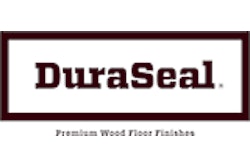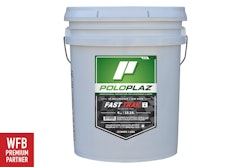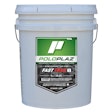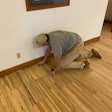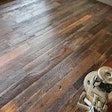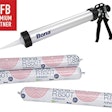

A lot of hardwood flooring professionals ask: Which is better, water-based finishes or oil-based finishes? That’s like asking someone: Which is better, a car or a truck? Well, what are you trying to do? Everybody wants things to be black and white, but that’s not how the world of wood floor finishing works. In reality, the decision can be somewhat customer-based and somewhat contractor-based. Here are some things to consider when making the decision::
Market Expectations: In some cases, choosing one type over the other is market-driven. In some markets, the expectation is oil-based and in some the expectation will be water-based. In areas, like California, oil-based is no longer allowed by due to government regulations. Generally speaking, most rural markets tend to use more oil-based while urban markets use more water-based. An exception is the Northeast, which is still very heavy on oil-based.
Cost: Of course, a huge difference is price. Oil-based is low-cost, whereas single-component water-based is going to cost significantly more and two-component water-based is going to cost even more. If you think of it only like that, it makes oil-based more appealing but remember finish is not a huge percentage of expenses when you consider the overall cost of a job.
Dry Time: Oil-based finishes generally dry overnight, so you must come back the next day to put on the next coat. With water-based, you can do a second coat the same day. That’s a savings in convenience and time, which means that’s also a savings in actual money.
Appearance: Oil-based finishes generally have a thicker appearance. They amber and have more depth in appearance, yielding a richer color. Most water-based finish dry clear. Some pros will go for an oil-based look for specific wood species, such as Walnut and Brazilian Cherry, when they want to bring out the richness of the color of the wood. There are some options to achieve an oil-based look without using oil-based finishes. One is to use an ambering water-based finish, like DuraSeal Waterbase Polyurethane (commonly referred to by pros as “Black Bottle”), which was designed to mimic the look of oil. Another option to get the oil look is to stain the floor with a neutral color stain, then coat with a water-based finish.
Odors and VOCs: For customers who are sensitive to smells or are concerned about solvents, water-based finishes are the obvious choice.
At the end of the day, the contractor has a huge influence on what finish the customer chooses. When you are talking with your customer, remember you are the hardwood flooring expert ,be confident in being the professional who knows about wood flooring products and can explain the differences. This way you and the customer can pick the right finish for the job.














